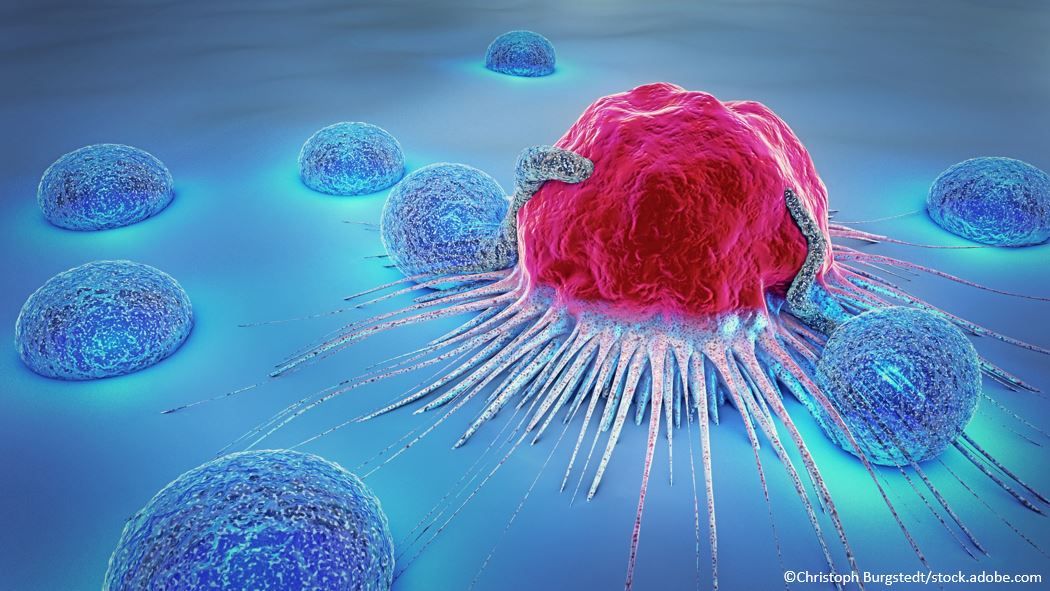- Clinical Technology
- Adult Immunization
- Hepatology
- Pediatric Immunization
- Screening
- Psychiatry
- Allergy
- Women's Health
- Cardiology
- Pediatrics
- Dermatology
- Endocrinology
- Pain Management
- Gastroenterology
- Infectious Disease
- Obesity Medicine
- Rheumatology
- Nephrology
- Neurology
- Pulmonology
Cancer Diagnosis Rates in 2021 Still Lagged Behind Projections Following Pandemic Effects
The decline in cancer diagnoses during the COVID-19 shutdown in 2020 did not lead to an expected compensatory increase in diagnoses in 2021, according to NCI researchers.
Trends in the incidence of cancer in 2021 approached those of prepandemic levels, but with no apparent rebound observed in diagnoses to compensate for those missed during the interruption in health screening and medical care in 2020.
©Christoph Burgstedt/stock.adobe.com

The findings come from a new analysis by the National Cancer Institute (NCI) published this week in the Journal of the National Cancer Institute.
NCI researchers, led by Nadia Howlander, PhD, Division of Cancer Control and Population Sciences, National Cancer Institute found that actual cancer diagnoses in 2021 were approximately 100 000 fewer than the expected number. The trend was consistent across several specific cancer sites, although it did not reach statistical significance, Howlander and colleagues wrote.
The researchers did note 2 specific exceptions, describing an uptick seen in diagnoses of advanced-stage breast cancer and late-stage pancreatic cancer. “The increased incidence of distant-stage breast cancers in 2021 compared with expected rates indicates that the suspension of breast cancer screening during the pandemic and a potential rebound effect may have contributed to the higher observed rate of distant breast cancer in 2021,” investigators wrote, noting a similar effect for advanced stage pancreatic cancer.
Overall, incidence rates for all cancer sites and for the 5 specific sites examined in the study did return to prepandemic levels but not at the expected rate, the researchers said. “Disruptions caused by the pandemic to the healthcare system leading to delays in cancer screenings and diagnoses resulted in a decline in reported cancer incidence rates in 2020 which seem not to have fully recovered in 2021."
Howlander and team cite previous research that revealed an abrupt drop in cancer diagnoses in early 2020 as well as dips in the volume of pathology reports, a scenario that suggests many cancers were “not being diagnosed in a timely manner.” Their study assessed whether or not diagnoses missed in 2020 were “caught” in 2021, using data from the NCI’s Surveillance, Epidemiology, and End Results (SEER) database for the years 2019 to 2021. The SEER data represented 22 cancer registries and nearly half (48%) of the US population.
For their analysis, Howlander et al included all cancers combined and cancer of 5 specific sites (breast, prostate, lung, pancreas, and thyroid), which have recommendations for screening, are often detected based on symptoms, or are typically detected incidentally during a medical procedure. When they compared the 2021 expected age-adjusted rates of the specific cancers with the observed age-expected rates for the year, they reported rate ratios (RR) as follows:
- All sites: 459.06 vs 458.33 (RR 1.00, 95% CI 0.97-1.03)
- Breast: 140.49 vs 137.42 (RR 0.98, 95% CI 0.87-1.09)
- Prostate: 135.06 vs 127.07 (RR 0.95, 95% CI 0.80-1.10)
- Lung/bronchus: 49.40 vs 46.93 (RR 0.95, 95% CI 0.94-0.96)
- Pancreas: 14.25 vs 13.92 (RR 0.98, 95% CI 0.95-0.99)
- Thyroid: 14.57 vs 13.62 (RR 0.93, 95% CI 0.85-1.02)
Further analyses of cancer sites by stage at diagnoses showed rebound that reached statistical significance only for localized breast cancer (RR 1.03; 95% CI, 1.00 to 1.06)and metastatic breast cancer (RR 1.09, 95% CI, 1.04 to 1.13). Advanced stage pancreatic cancer showed a slight increase in 2021 rates that was not statistically significant. Thyroid cancer, frequently detected incidentally during a medical procedure, had the most significant decline during the COVID-19 pandemic. Late-stage disease had the largest rate ratio, but significance was borderline.
The year 2021, while not the peak of the pandemic, was a "transition year," the researchers note, affected by new waves of infection and evolving SARS-CoV-2 variants that influenced states' enforcement of health emergency regulations. "Consequently, it remains uncertain whether 2021 witnessed a complete return to pre-2020 levels of medical care. Continuous monitoring is necessary to address the long-term consequences of the COVID-19 pandemic on cancer incidence and outcomes," they concluded.
